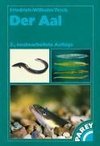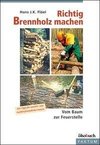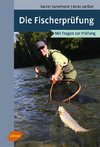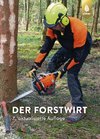
Fisheries science
Source: Wikipedia. Pages: 119. Chapters: Biomass, Upwelling, Sediment Profile Imagery, Vessel monitoring system, Marine Protected Area, Whaling controversy, Population dynamics of fisheries, Fisheries management, Ed Ricketts, History of research ships, Maximum... Viac o knihe
Produkt je dočasne nedostupný
25.96 €
bežná cena: 29.50 €
O knihe
Source: Wikipedia. Pages: 119. Chapters: Biomass, Upwelling, Sediment Profile Imagery, Vessel monitoring system, Marine Protected Area, Whaling controversy, Population dynamics of fisheries, Fisheries management, Ed Ricketts, History of research ships, Maximum sustainable yield, Reef aquarium, Fishing down the food web, Callum Roberts, Bioluminescence, List of research vessels by country, Argo, Carl Walters, Aquatic ecosystem, RV Calypso, Johan Hjort, Shark sanctuary, Marine snow, Pelagic zone, Ussif Rashid Sumaila, Daniel Pauly, Stock assessment, Ecosystem model, Match/mismatch, Monitoring control and surveillance, Ecological forecasting, David Cushing, EcoSCOPE, GIS and aquatic science, Thermocline, Acoustic tag, Villy Christensen, Carl Safina, Tony J. Pitcher, Fish counter, Shifting baseline, Benthic zone, Bill Ricker, Sustainable yield in fisheries, EconMult, Ocean gyre, Secchi disk, Ray Hilborn, Fish stock, Fisheries acoustics, Ecopath, Fisheries observer, Ransom A. Myers, Uwe Kils, Humboldt Current, Gotthilf Hempel, R. J. McKay, Fish mortality, John N. Cobb, Beverton-Holt model, Seabed, Bioeconomics, Fredrik Meltzer Wallem, Walther Herwig, Fishery Resources Monitoring System, Milner Baily Schaefer, Leo Margolis, Fish measurement, Harald Rosenthal, The Sunken Billions, Bruno Hofer, Catch reporting, Stephen Bowen, Data storage tag, Yellowhead disease, Georg Sars, Virtual population analysis, Ali Abdelghany, Water column, TFM, Tore Schweder, Age class structure, Piscicide, Fred M. Utter, Boris Worm, Benthic lander, Lampricide, Electronic Reporting System, EconSimp. Excerpt: Sediment Profile Imagery (SPI) is an underwater technique for photographing the interface between the seabed and the overlying water. The technique is used to measure or estimate biological, chemical, and physical processes occurring in the first few centimetres of sediment, pore water, and the important benthic boundary layer of water. Time-lapse imaging (tSPI) is used to examine biological activity over natural cycles, like tides and daylight or anthropogenic variables like feeding loads in aquaculture. SPI systems cost between tens and hundreds of thousands of dollars and weigh between 20 and 400 kilograms. Traditional SPI units can be effectively used to explore continental shelf and abyssal depths. Recently developed SPI-Scan or rSPI (rotational SPI) systems can now also be used to inexpensively investigate shallow (<50m) freshwater, estuarine, and marine systems. Humans are strongly visually oriented. We like information in the form of pictures and are able to integrate many different kinds of data when they are presented in one or more images. It seems natural to seek a way of directly imaging the sediment-water interface in order to investigate animal-sediment interactions in the marine benthos. Rhoads and Cande (1971) took pictures of the sediment-water interface at high resolution (sub-millimetre) over small spatial scales (centimetres) in order to examine benthic patterns through time or over large spatial scales (kilometres) rapidly. Slicing into seabeds and taking pictures instead of physical cores, they analysed images of the vertical sediment profile in a technique that came to be known as SPI. This technique advanced in subsequent decades through a number of mechanical improvements and digital imaging and analysis technology. SPI is now a well-established approach accepted as standard practice in several parts of the world, though its wider adop...
- Vydavateľstvo: Chronicle Books
- Formát: Paperback
- Jazyk:
- ISBN: 9781156771464


 Nemecký jazyk
Nemecký jazyk 









